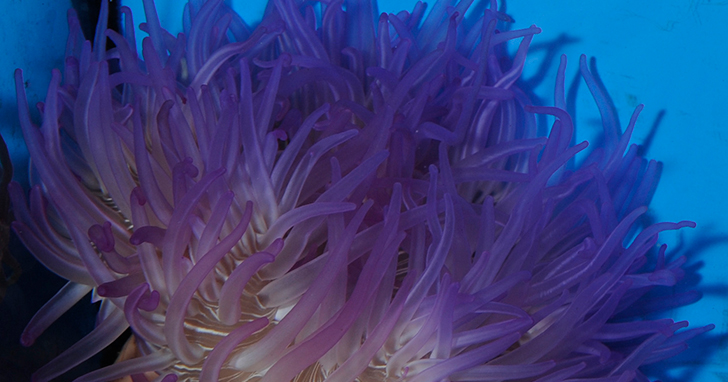Marine Inverts - Anemones

Marine anemones are predatory marine animals of the Actiniaria order that contain characteristics of both coral and jellyfish. Named after the anemone flowering plant, they bear resemblance to the plant due to their vibrant colors and flower-like appearance. There are over one thousand species of anemones, and they vary greatly, but most contain three main body parts: a polyp that attaches to a footed basal disc, a ‘mouth’ or oral disc for eating, and tentacles. In their natural environment, anemones live in oceans or seas. Anemones are extremely sensitive to changes in their environment. Anemone aquarium requirementsIn marine aquariums, most anemone attach themselves to the substrate or other hard surface with the ‘foot’ located on their basal disc. The ‘foot’ is used to move around the aquarium by attaching to and releasing from these hard surfaces (as well as floating). Because they do not have eyes, it is good practice to secure your tank equipment and install screens over pumps or powerheads, so your anemone does not get injured while in motion. One of the main reasons an anemone will move locations is because they are trying to locate more suitable environmental conditions. If you notice your anemone is moving, it is time to check your water parameters. Anemones should only be introduced to an established aquarium with water conditions that are also suitable for corals. Because algae live in the bodies of anemones, they require medium to high density lighting. There should be some level of water flow in your tank, and some species will even tolerate a high water flow. Proper water chemistry is important to Anemones. Recognizing there may be exceptions for specific Anemones, the following water conditions should be maintained: temperature range between 72°-78°F, salinity range of 1.023-1.025 sg, pH levels between 8.1-8.4, and alkalinity within the range of dKH 8-12. Anemone feeding habitsAnemone will hide in groups of seaweed and crevices that are large enough to conceal them. They are predators that use their tentacles to capture prey and move food toward their ‘mouth.’ A specialized cell in their tentacles contains a barb or venomous coiled thread that can be used to defend themselves or to capture prey. Carnivores, some of their favorite foods are crabs, krill, mussels, scallops, shrimp, and even small fish. Generally speaking, anemones will eat once or twice per week, but can go even longer stretches. A sign that they are hungry is that they will open their oral disc. Symbiotic relationships between anemone and ClownfishAnemones can form beneficial relationships with Clownfish. Clownfish gain protection by hiding in the anemones’ tentacles and eating algae found on the anemone bodies. They contain a mucus coat that can protect them from the anemone’s sting. Some Clownfish get stung by anemones and require multiple stings to build immunity. All anemones should be handled with care, as they can sting humans, other anemones, corals, and fish that infringe on their territory. Anemones get the benefit of aeration when Clownfish hide in their tentacles and dart about. They also receive protection from predators that the Clownfish scares away. They get nutrients from the fish waste and can capitalize on the food that a Clownfish attracts, which it stings and eats. Popular AnemonesOne of the most popular anemones used in marine aquariums is the Bubble Tip variety. Named for the bulb-like tip at the end of its tentacles, they come in a variety of colors. The Long Tentacle or Corkscrew Anemone is another popular choice due to its look. With many long tentacles that curl upon themselves at the ends, they add a lot of interest to your marine aquarium and are fairly hardy. Beaded Anemones are another popular species of anemones. They have an interesting look because their tentacles have swellings on them that resemble beads. Anemone reproductionReproduction method varies among the anemone species. Some species release both the egg and sperm through their oral disc which creates a larva that grows into a polyp once it finds a suitable resting place. Others are asexual reproducers, changing sexes during their lifetime, while others reproduce by regenerating. With so many options available by quality suppliers like LiveAquaria®, anemones can make an interesting and colorful addition to your saltwater tank. |
|
|




